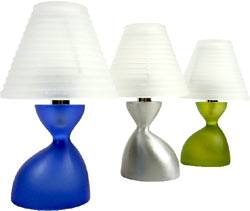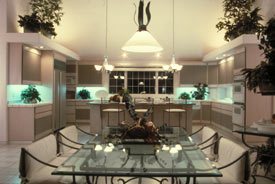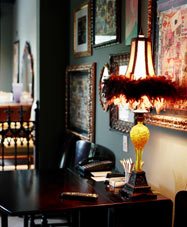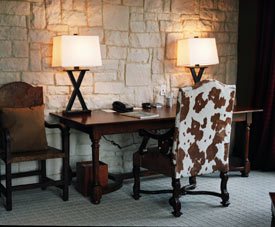
Many times good interior design counts on a certain kind of sleight-of-hand: The very best job is the one you don't notice, because it doesn't call attention to itself.
Good lighting, in a home or business, is one of those things that's invisible - if it's done well. You only notice the lighting of a room if it's too bright or too dim, not if it's just right. Our goal in offering this series of articles on Lighting is to give you some concrete advice on how to light a room so effectively that no one notices whether you're using florescent or incandescent lights, track lighting or standing lamps. They'll notice only that the room feels comfortable, and that they want to come back again.

In this continuing series on lighting, we've most recently taken a look at lighting through the NYIAD Guidelines to Interior Design: function,mood, and harmony. These Guidelines can be used for any aspect of decorating, whether you're looking at a whole room or at just one aspect, such as lighting.
This month, let's look at how to best have your lighting choices harmonize.
There are two major points to consider here: harmony among the fixtures, and harmony between the fixtures and the rest of the furnishings.
NYIAD Tip
First, you want all the lighting in a given room to work together. Always consider the range of lighting options available, and make sure you make use of them, to avoid monotony in your lighting. For example, in one room, you could have track lighting, floor lamps, and a table lamp; this will work as long as the lighting harmonizes, and will provide enough variety in types of lighting.
 For example, you may have a living room with two floor lamps, one on either side of the sofa. This is fine, but a little boring. To make the lighting more interesting, and to add some variety, try adding a wall sconce and a desk lamp across the room. These lighting sources will work together to provide harmonious lighting.
For example, you may have a living room with two floor lamps, one on either side of the sofa. This is fine, but a little boring. To make the lighting more interesting, and to add some variety, try adding a wall sconce and a desk lamp across the room. These lighting sources will work together to provide harmonious lighting.
But don't stop there; remember that any lighting fixtures must also harmonize with the rest of the room's furnishings. A sixties lamp won't work with a Victorian-styled room, just as Japanese paper shades are best used with a spare, Oriental look, or a very modern look.
You can always use the simple test of telling if each lighting fixture works by asking yourself how another style of lamp would work in its place. If the answer is "much better," then you know what you have to do.


This doesn't mean you should stint on creativity. A Chinese lantern style may work perfectly with a room decorated in sleek grey and white; an old-fashioned painted lampshade may be just the thing to pull together a room by bringing in all the colors of the sofa, carpet, and walls.
The main consideration is to make sure all the lighting elements, like everything else in the room, harmonize.







